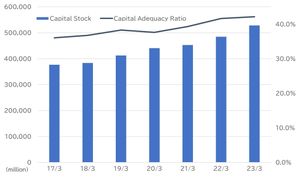The Eurozone’s annual inflation rate climbed to 2.5% in January 2025, marking its fourth consecutive increase and surprising economists who had forecast it to hold steady at 2.4%. According to flash data released by Eurostat, energy prices played the largest role, soaring from just 0.1% last December to 1.8% this January. The rise reflects broader inflation trends affecting households and businesses across the 20 nations sharing the euro.
Services, which typically represent significant spending by consumers, recorded the highest inflation rate at 3.9%, albeit down from 4% the previous month. Meanwhile, inflation rates for food, alcohol, and tobacco fell, resting at 2.3%, down from 2.6% last month. Non-energy industrial goods inflation remained stable at 0.5%, providing some relief amid the rising energy costs.
Within the Eurozone, Croatia reported the highest inflation at 5%, followed closely by Belgium at 4.4% and Slovakia at 4.1%. Analyzing the larger economies within the bloc, Germany registered inflation at 2.8%, France at 1.8%, Italy at 1.7%, and Spain at 2.9%. These variances highlight not just the overall inflation dynamics, but also the specific challenges various member states face.
Bert Colijn, chief economist at ING for the Netherlands, noted, "Inflation rose from 2.4% to 2.5% in January, signaling persistent pressures within the Eurozone economy." Colijn also cautioned about future uncertainties due to potential rising energy costs and the looming tariff disputes between the U.S. and the EU, which could exacerbate inflationary concerns.
The European Central Bank (ECB), responding to these inflationary trends, recently implemented another interest rate cut—this time by 25 basis points—bringing the key deposit rate to 2.75%. The ECB’s decision was based on updated assessments of the inflation outlook and the underlying dynamics contributing to price changes.
Despite these measures, many economists express mixed opinions on how long inflationary pressures will persist. Jack Allen-Reynolds, deputy chief eurozone economist at Capital Economics, explained, "The latest inflation data won’t alter ECB policymakers’ perspectives on the near-term interest rate path, as services inflation remains stubbornly high, limiting aggressive rate cuts." He indicated the ECB might prefer smaller, more measured policy adjustments, particularly as inflation is predicted to approach the 2% target by the summer.
Interestingly, inflation records show fluctuations similar to patterns observed previously. Headline inflation had hit lows of 1.7% last September, but has since seen increases as previous lower energy prices begin to fade from the calculations. This cyclic nature of inflation can create challenges for monetary policy, especially as the ECB aims to stabilize the economic environment.
To add to the complexity, potential geopolitical tensions around tariffs impose risks to the Eurozone outlook. Any new tariffs imposed by the U.S. on EU imports could suppress demand for European goods, adversely affecting economic growth. Colijn noted, "Retaliatory tariffs would also likely add to inflation since such duties typically result in higher consumer prices, indicating inflationary risks are not yet fully contained."
Two weeks prior, the ECB reiterated its commitment to both monitoring price stability and supporting economic growth. According to their reports, disinflation is on track. They stated, “Inflation has continued to develop broadly in line with the staff projections and is set to return to the Governing Council’s 2% medium-term target later this year.”
While the current inflation data may not incite drastic policy shifts from the ECB, the looming uncertainties around energy prices and potential tariff disputes generate apprehension among economists about future consumer price growth. Even the impact of the rising dollar is not yet fully felt within Eurozone inflation calculations, with historical data indicating only minor influences to date.
Overall, the situation encapsulates the delicate balance the ECB must maintain; ensuring inflation approaches its target level, sustaining economic momentum, and managing multiple external risks simultaneously. With the inflation report coming post-significant consumer price index data releases across Germany and France, more scrutiny will be warranted as economies navigate this volatile inflationary environment.
For now, the outlook will vary by country and sector, and all eyes will be on the ECB's forthcoming meetings, where the discussions surrounding policy easing will likely be central to shaping the Eurozone's economic future.



